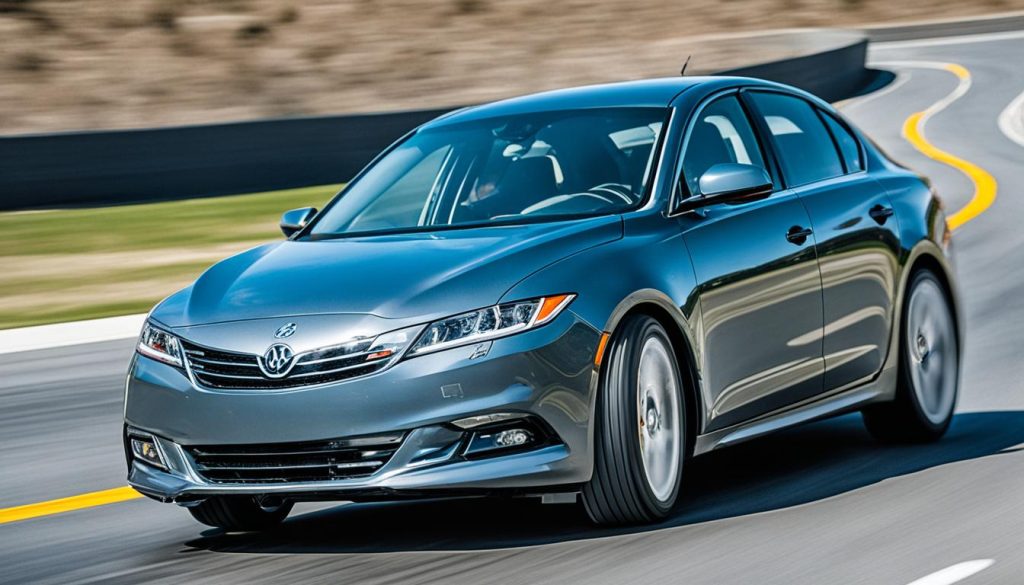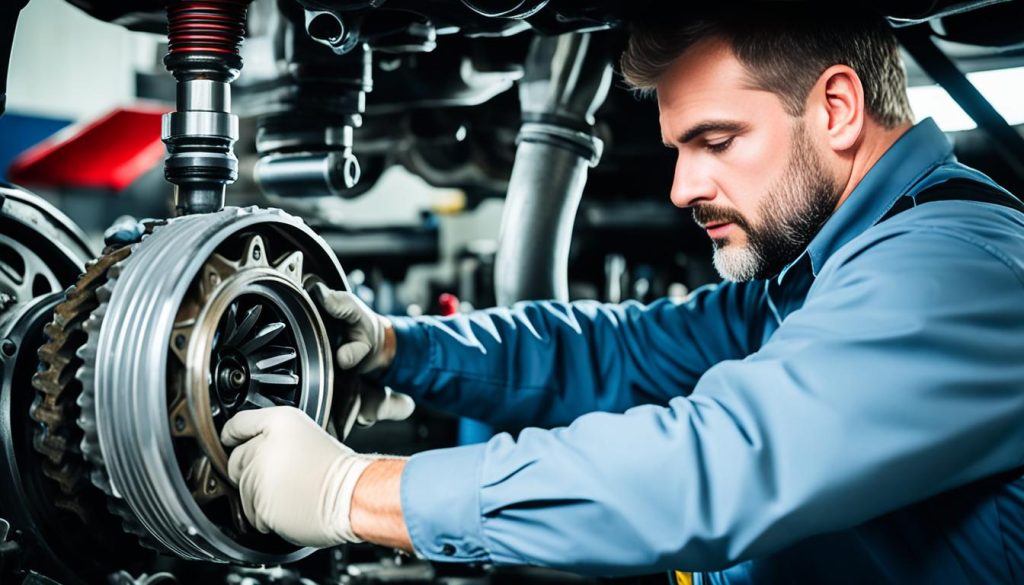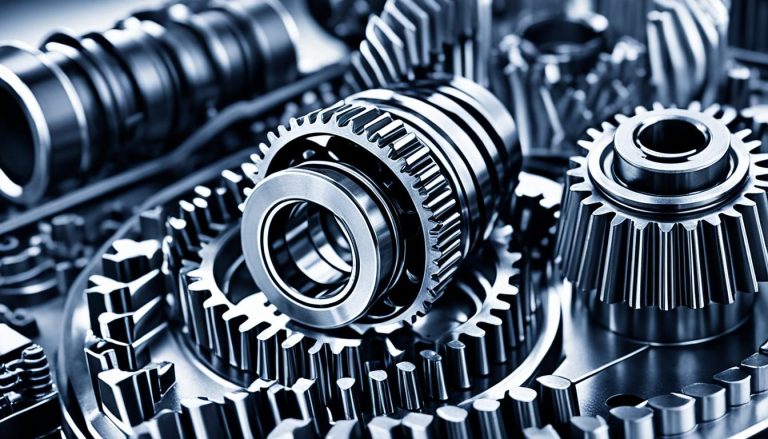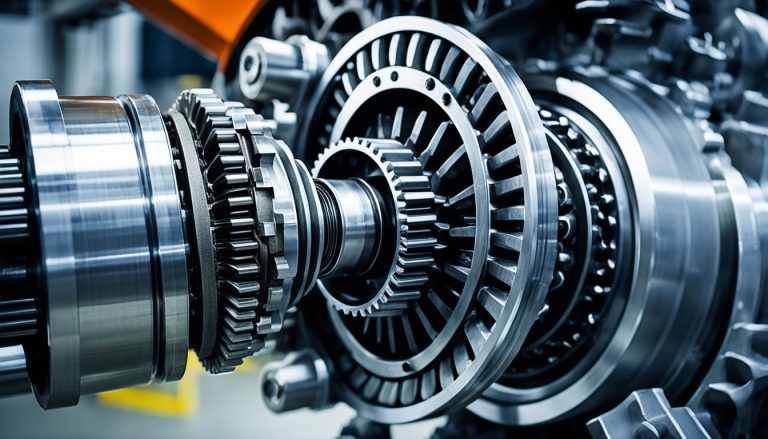Limited Slip Differential Drawbacks Explained
When you’re navigating the landscape of car components, you’ll likely hear glowing reviews about the benefits of a limited slip differential (LSD). While it’s true that LSDs can enhance your vehicle’s traction, handling, and overall safety, it’s also vital that you understand the full picture, including the limited slip differential disadvantages. It might come as a surprise that one of the notable LSD drawbacks is their inability to transfer 100% of the power to just one wheel, unlike some of their competitors. This potentially means you’re not getting the maximum performance possible in certain circumstances. Additionally, weighed against the traditional open differentials, the drawbacks of limited slip differential include a heftier price tag – not just upfront but in the long maintenance run as well, due to their sophisticated inner workings.
Key Takeaways
- LSDs cannot allocate power to a single wheel, affecting performance in specific situations.
- The initial and ongoing costs of LSDs are higher compared to open differentials.
- Maintenance is more complex, potentially leading to more frequent replacements.
- LSDs include complex components that contribute to a higher wear rate.
- Understanding these limitations is crucial for informed vehicle customization decisions.
Understanding the Function of a Limited Slip Differential in Vehicles
When you’re navigating through a tight corner or cruising on a slippery road, your vehicle’s differential plays a crucial role in maintaining traction. But not all differentials are created equal—especially when it comes to the operation of limited slip differentials (LSD). Understanding the mechanics behind their operation can illuminate both their advantages and their limited slip differential disadvantages.
Core Mechanics Behind LSD Operation
The essential purpose of the LSD is to enhance your vehicle’s grip by appropriately allocating engine torque between the wheels during differing driving conditions. As your vehicle turns a corner, the inside wheel naturally rotates at a slower rate than the outside wheel. An LSD remedies this by sending more torque to the wheel that can utilize it most effectively, thereby harnessing the full potential of your vehicle’s power. The LSD operation mechanics involve one of two distinct types:
- Mechanical Clutch LSDs: These use a series of clutches and gears to manage torque distribution between the wheels depending on their traction.
- Viscous LSDs: These rely on a thick fluid to transfer torque, which responds to speed differences between the wheels. However, maintaining the fluid’s efficiency requires more frequent maintenance.
Comparison With Open and Other Types of Differentials
Understanding the LSD operation mechanics juxtaposed with other differential types helps in evaluating their application in various driving scenarios. For instance, an open differential, a common counterpart, distributes torque equally but lacks the dynamic torque transfer capabilities of an LSD.
| Differential Type | Torque Allocation | Complexity | Cost |
|---|---|---|---|
| Open | Equal | Low | Low |
| Mechanical LSD | Variable | Medium | Medium |
| Viscous LSD | Variable | Medium | Medium-High |
| Locking Differential | 100% to one wheel | High | High |
While LSDs offer a significant advantage in traction over open differentials, locking differentials exceed LSDs in certain scenarios, like some off-road conditions by being able to send all the torque to a single wheel. However, they lack the road manners of LSDs. Furthermore, advanced types like active differentials and torque-vectoring systems provide unparalleled control using electronics but do come at an even higher cost and complexity. Ultimately, the choice of differential often boils down to a balance between cost, complexity, and the kind of driving you primarily do.
Limited Slip Differential Disadvantages in Everyday Driving
When you’re considering the components that define your vehicle’s driveability, everyday driving with LSD may not always present the performance gains you would expect. While a limited slip differential (LSD) is designed to optimize traction during high-performance scenarios, it may introduce certain limitations of LSD in daily driving. One key point is that LSD does not allow for the full transfer of power to a single wheel when necessary, which might be less than ideal in everyday driving scenarios where equal traction on both wheels isn’t crucial. This can result in experiences on the road that don’t fully justify the system’s additional cost and complexity.
- Maintenance: To keep an LSD in good working condition, more meticulous and frequent maintenance is necessary compared to traditional open differentials. This means higher maintenance costs and the uncertainty of potential repairs, factors that can impact the long-term affordability of your driving experience.
- Cost Efficiency: For those using their vehicle predominantly for commuting or urban travel, the performance advantages of an LSD diminish, leading to questions about the cost-benefit ratio. Is the enhanced performance on occasional spirited drives worth the extra upfront and ongoing costs?
- Driving Dynamics: The intricate operation of LSDs might not always translate to significantly improved driving dynamics in routine situations, like driving on flat, well-maintained roads. Thus, the added value can seem negligible for the average driver who rarely encounters scenarios where LSD advantages are apparent.
Considering the above LSD disadvantages, it’s essential to weigh both sides of the equation carefully. Is your driving predominantly characterized by performance scenarios that warrant the additional investment in an LSD? If not, it may be more practical to stick with a more conventional differential setup that aligns with your daily driving needs while keeping costs in check.

The Impact of LSD on Vehicle Control and Performance
Exploring the influence of Limited Slip Differentials (LSDs) on your vehicle’s handling, you’ll find a dynamic interplay at work. LSDs are engineered to enhance the driver’s command over their vehicle by intelligently optimizing traction where it’s needed most. This is especially beneficial during off-road adventures or when facing challenging driving environments. However, it’s crucial to note that LSDs, while adept in numerous conditions, may reach their limitations when situations demand absolute torque transfer to a singular wheel.
How LSD Affects Traction and Grip
At the heart of LSD’s benefits is its ability to enforce better grip and traction control. When encountering uneven surfaces, an LSD actively allocates torque to the wheel with adequate traction, thereby stabilizing the vehicle. This intricate balance of power safeguards against loss of control, even in adverse weather conditions or on treacherous terrains. However, it’s important to recognize the scenarios where the LSD’s grip enhancement might not suffice, particularly in extreme situations that necessitate full torque on one wheel.

The Role of LSD in Vehicle Dynamics During Turns
Cornering is where the advantages of an LSD become more pronounced. By curbing wheel slippage and facilitating a more equitable torque distribution, LSDs contribute to a smoother and safer cornering experience. This translates into fewer spinouts and improved stability, a crucial factor when navigating sharp turns at high speeds. Nevertheless, it’s essential to acknowledge that the precision provided by the LSD can, at times, be affected by the inherent limitations in its design, which could influence power transition during such maneuvers.
Road safety experts often emphasise the nuanced intervention of LSDs in shaping a vehicle’s cornering capabilities, highlighting its role as a balance between raw power application and controlled maneuvering.
- Traction Control: Better grip on challenging surfaces
- Dynamic Handling: Responsive adjustment of torque to maintain stability
- Cornering Safety: Limited slip features contribute to reduced skidding or spinning
While assessing the impact of LSD on your vehicle’s control and performance, it remains evident that such a system offers pivotal enhancements, especially when precision and adaptability are of the essence in varying driving conditions.
Cost and Maintenance Considerations for LSD Equipped Vehicles
When you opt for a vehicle with a Limited Slip Differential (LSD), it’s crucial to be aware of the LSD cost factors and maintenance of limited slip differentials. These specialized components are essential for enhanced traction and performance but come with their own set of upkeep requirements. Regular LSD maintenance costs can be higher than for a standard differential due to the complexity of the system. Informed maintenance is not just beneficial; it’s a necessity to prevent the likelihood of more severe issues down the line.

Maintaining the health of your LSD involves periodical checks and fluid changes to prevent wear and tear on its intricate parts. Skipping these maintenance rituals could lead to costly repairs or even full replacements of the LSD unit. Below is a table summarizing the potential maintenance costs associated with keeping your LSD in optimal condition.
| Maintenance Item | Typical Cost | Frequency |
|---|---|---|
| Differential Fluid Change | $80 – $150 | Every 30,000 to 60,000 miles |
| Differential Overhaul | $400 – $800 | As needed |
| Clutch Pack Replacement | $500 – $1200 | Varies based on usage |
| Complete LSD Unit Replacement | $1500 – $3000 | Rarely, unless severely damaged |
Bearing in mind these factors, if an LSD’s capabilities align with your driving needs, the additional costs can be a worthwhile investment. Just remember to factor in these costs when budgeting for your vehicle’s upkeep. The upshot is that with attentive care, your LSD can provide reliable performance for years to come.
Limited Slip Differential Drawbacks in Various Driving Conditions
When you’re dealing with diverse driving conditions, the limitations of your vehicle’s components could mean the difference between optimal performance and a challenging ride. With the inclusion of a limited slip differential (LSD) in your car, you expect improvements when it comes to traction and stability. However, while LSDs have their benefits, they are not without their shortcomings, particularly when you venture off-road or encounter slippery conditions. In these situations, the LSD might struggle due to its inherent torque distribution features, presenting real-life driving challenges that might take you by surprise.
Challenges Posed by LSD in Off-Road and Slippery Conditions
As you maneuver through tough terrains and slick roads, you often depend on your vehicle to execute power delivery where it’s most needed. Unfortunately, the design of an LSD, while offering improved traction, may falter on low-grip surfaces. This is one of the notable LSD challenges off-road, where one wheel could lose contact with the ground or find considerably less resistance. Because of these torque transfer limitations, you may not get the performance efficiency you require as power cannot be fully transferred to the wheel with better grip, leading to potential slippage or getting stuck in difficult situations. Recognizing these disadvantages in slippery conditions can help you prepare for alternative solutions or adjustments in your driving strategy.
LSD Performance in High-Traction Environments
In contrast, during drives along well-maintained roads or on the racetrack, an LSD can shine by providing beneficial torque modulation, which in turn, reduces wheel slip and capitalizes on engine power to bolster a controlled driving experience. Yet these benefits come with a caveat. The mechanical restrictions of LSDs mean that, in high-traction scenarios, they may not always deliver the upper hand. Driving enthusiasts may notice performance drawbacks of LSD when precise torque application to one wheel could enhance acceleration or stability, particularly during spirited driving maneuvers. Though LSDs contribute to better vehicle handling overall, it’s important to be aware of these contexts where they could be less advantageous.
FAQ
What are the main disadvantages of a limited slip differential (LSD)?
The main disadvantages of LSD include its inability to provide 100% power to a single wheel, higher initial and maintenance costs compared to open differentials, increased wear and potential for more frequent replacement, and potential suboptimal performance in certain driving conditions where full torque transfer is necessary.
How does a limited slip differential operate in a vehicle?
A limited slip differential operates by distributing torque to the wheel with more traction, especially during cornering or when one wheel loses grip. It is designed to adjust torque transfer between the wheels to minimize slippage and maintain vehicle balance and control.
How do limited slip differentials compare to open and other types of differentials?
LSDs provide better traction control than open differentials by shifting torque to the wheel with the most grip. However, compared to locking differentials that can transfer 100% of the torque to a single wheel, LSDs may fall short in extreme off-road conditions. Active and torque-vectoring differentials offer refined control through electronics but come at a significantly higher cost.
What are the limitations of using an LSD for everyday driving?
The limitations of using an LSD for everyday driving include the higher cost of installation that may not be justified if the vehicle is mainly used for routine transportation, as well as the need for more meticulous maintenance to ensure the intricate parts of the LSD are functioning correctly.
How does an LSD impact vehicle control and performance?
An LSD improves vehicle control by enhancing traction and grip, particularly on uneven surfaces and while off-roading. During turns, it helps maintain balance by limiting wheel slippage for more stable cornering, although it has limitations in its torque distribution which could affect the precise control of the vehicle in some scenarios.
What are the cost and maintenance considerations for vehicles equipped with LSD?
Owning a vehicle with an LSD means potentially higher maintenance expenses due to the complex mechanism that may require professional servicing. It is essential for vehicle owners to be proactive in the upkeep of their LSD to avoid costly repairs or the need for replacements in the future.
What challenges do LSDs pose in off-road and slippery conditions?
While LSDs improve grip on many surfaces, they can struggle on extremely steep or uneven terrain where one wheel loses contact or grip. Their design prevents them from sending the full torque to the wheel with traction, which can result in less efficient vehicle performance in certain off-road or slippery conditions.
How does LSD performance differ in high-traction environments?
In high-traction scenarios like well-maintained roads or racing tracks, LSDs can reduce wheel slip and better utilize engine power for a controlled driving experience. However, their limitation in equally distributing torque might not always be advantageous, especially when aggressive driving maneuvers would benefit from precise torque application to a single wheel.






